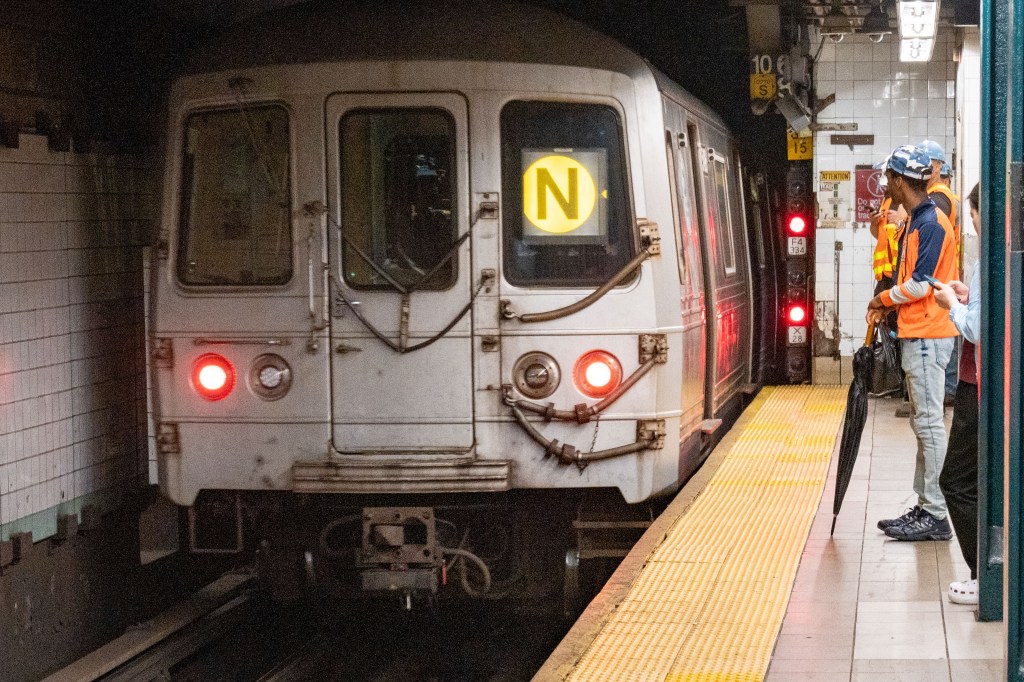New York City’s aging subway infrastructure once again took center stage Friday morning when a southbound N train became stranded in the crucial 60th Street tunnel connecting Manhattan and Queens. The incident, which left passengers trapped underground for nearly an hour, highlights the ongoing challenges facing the Metropolitan Transportation Authority (MTA) as it struggles to maintain a century-old transit system that serves millions of daily riders.
The Incident: When Modern Transit Meets Aging Infrastructure
According to sources familiar with the situation, the N train experienced a complete power failure after losing its connection to the third rail electrical system. The breakdown occurred in one of the most critical sections of the subway network – the underwater tunnel that forms a vital link between Manhattan’s Roosevelt Island station and Queens Plaza in Long Island City.
For passengers aboard the stranded train, what began as a routine morning commute quickly transformed into an underground ordeal. Trapped in the tunnel’s confines without air conditioning or proper ventilation, riders faced rising temperatures and increasing anxiety as minutes stretched into an hour-long nightmare.
The Ripple Effect Across Multiple Lines
The single train failure created a domino effect that rippled across the subway system, impacting not just the N line but also the Q, R, and W lines that share portions of the same infrastructure. This interconnectedness, while designed for efficiency, often means that one breakdown can paralyze multiple routes simultaneously.
Understanding Third Rail Power Systems: The Lifeline of NYC Transit
To fully grasp the significance of Friday’s incident, it’s essential to understand how New York’s subway system draws its power. The third rail system, implemented over a century ago, provides 625 volts of direct current electricity to train motors through a continuous rail running parallel to the tracks.
When a train “fails to draw power from the third rail,” as happened Friday morning, several factors could be at play:
- Electrical grid failures affecting power distribution
- Physical disconnection between the train’s contact shoes and the electrified rail
- Signal system malfunctions that cut power as a safety measure
- Weather-related issues causing short circuits or power surges
The 60th Street tunnel, originally constructed in the early 1900s, represents both an engineering marvel and a maintenance challenge. This underwater passage, which burrows beneath the East River, faces unique environmental stressors including moisture, temperature fluctuations, and the constant vibration from passing trains.
A Pattern of Infrastructure Challenges
Friday’s breakdown is far from an isolated incident. The MTA has grappled with increasing frequency of power-related failures across its 472-station network. According to transit advocates and industry experts, these incidents reflect deeper systemic issues within the subway’s aging electrical infrastructure.
The Cost of Deferred Maintenance
For decades, budget constraints and political considerations led to deferred maintenance across the subway system. While the MTA has invested billions in recent years through various capital improvement programs, experts argue that the pace of deterioration often outstrips the rate of upgrades and repairs.
Dr. Sarah Chen, a transportation infrastructure specialist at Columbia University, notes: “What we’re seeing with incidents like Friday’s N train breakdown is the inevitable result of operating 20th-century technology in a 21st-century environment. The electrical systems were never designed to handle today’s ridership levels and operational demands.”
Impact on Commuters and the Broader Economy
The economic implications of subway delays extend far beyond individual inconvenience. When multiple train lines experience simultaneous delays, as occurred Friday, the effects cascade throughout the metropolitan area’s economic ecosystem.
Research from the New York City Economic Development Corporation suggests that every minute of subway delay costs the regional economy approximately $389,000 in lost productivity. Friday’s hour-long disruption, affecting four major subway lines, likely resulted in economic losses exceeding several million dollars when factoring in delayed meetings, missed appointments, and reduced business activity.
The Human Cost
Beyond economic statistics, subway failures take a real toll on the millions of New Yorkers who depend on public transit. For many riders, especially those traveling to time-sensitive jobs or medical appointments, these disruptions represent more than mere inconvenience – they can affect employment, healthcare access, and overall quality of life.
MTA’s Response and Recovery Efforts
The MTA’s emergency response protocols kicked into action once the stranded train was reported. Transit officials coordinated with New York City Fire Department rescue teams to ensure passenger safety while technical crews worked to restore power and establish alternative routing for affected lines.
The authority’s ability to resolve the situation within an hour, while certainly disruptive, demonstrates improved emergency response capabilities developed through years of experience managing similar incidents. However, critics argue that reactive measures, no matter how efficient, cannot substitute for proactive infrastructure investment.
Looking Forward: Modernization and Resilience
The Friday morning breakdown serves as yet another reminder of the urgent need for comprehensive subway modernization. The MTA’s current capital plan includes substantial investments in electrical infrastructure upgrades, signal system modernization, and enhanced emergency response capabilities.
Emerging Technologies and Solutions
Transit authorities worldwide are exploring innovative approaches to improve system reliability, including:
- Predictive maintenance systems using AI to identify potential failures before they occur
- Redundant power systems providing backup electricity during primary system failures
- Enhanced communication networks enabling real-time coordination during emergencies
- Climate-resilient infrastructure designed to withstand extreme weather and environmental stressors
Key Takeaways
- Infrastructure vulnerability: Friday’s N train breakdown highlights the ongoing challenges of maintaining century-old subway infrastructure
- Cascading effects: Single train failures can impact multiple subway lines simultaneously, affecting thousands of commuters
- Economic impact: Transit delays cost the NYC economy hundreds of thousands of dollars per minute in lost productivity
- Modernization imperative: Continued investment in electrical system upgrades and emergency response capabilities remains critical
- Passenger safety: Despite the disruption, emergency protocols successfully ensured all passengers were safely evacuated
- Systematic solutions needed: Reactive repairs must be complemented by proactive infrastructure modernization efforts
As New York City continues to rely on its subway system as the backbone of urban mobility, incidents like Friday’s N train breakdown serve as crucial reminders of the delicate balance between maintaining aging infrastructure and meeting the demands of modern urban transportation. The path forward requires sustained investment, innovative solutions, and a commitment to building a more resilient transit network for the millions who depend on it daily.
This article is based on reporting from the original source

Born and raised amidst the hustle and bustle of the Big Apple, I’ve witnessed the city’s many exciting phases. When I’m not exploring the city or penning down my thoughts, you can find me sipping on a cup of coffee at my favorite local café, playing chess or planning my next trip. For the last twelve years, I’ve been living in South Williamsburg with my partner Berenike.

